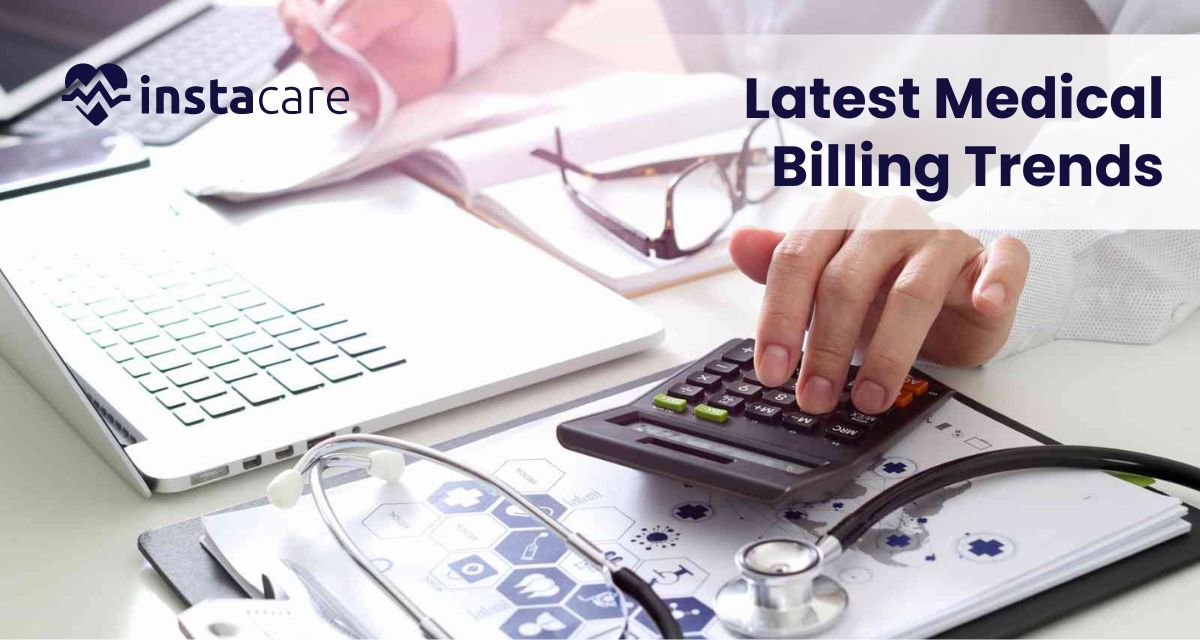Last updated on Wednesday, 10, July, 2024
Table of Contents
Stay Up to Date With the Latest Medical Billing Trends
In the fast changing world of healthcare administration today, the profession can ill afford to overlook new trends and strategies pertinent to medical billing, either in the practice, administration, or billing staff. The process of submitting and following up on claims with health insurance companies in order to receive payment for services provided by healthcare providers is referred to as medical billing. These processes are influenced by many factors in latest medical billing trends, including regulatory change, advancements in technology, and changes in payer dynamics.
Let us now delve deeper into a few important trends that have significantly shaped the medical billing industry today.
Technological Advancements in Latest Medical Billing Trends
In fact, technology has revolutionized the medical billing process, making it efficient and more accurate. Electronic Health Records (EHRs) and Practice Management Systems (PMS) streamline the very process of billing. It further automates billing activities and eliminates errors, further decreasing the cycle times of billing. Integrated AI and machine learning optimize the degree of accuracy in coding and billing to minimize denials and realize fast reimbursement.
Cloud-based solutions are increasingly deployed due to their scalability and accessibility. They ensure real-time collaborative interaction between care providers, billing staff, and payers—necessary to accelerate claim processing while decreasing the administrative overhead. Mobile applications offer convenience for patients to manage billing-related information, ensuring patient satisfaction by fostering transparency.
Regulatory Overview and Compliance
The regulatory environment has a dramatic effect on latest medical billing trends. There is absolutely no getting around the likes of the Health Insurance Portability and Accountability Act (HIPAA), which assures protection of the privacy and security of patients’ data. Additionally, the changes occurring in the reimbursement policy by Medicare and Medicaid directly impact billing strategies and revenue cycles for healthcare providers.
ICD-10 (International Classification of Diseases, 10th Revision) coding standards are recently updated and place the need for continuous education and adaptation of the same on the part of billing professionals. Remaining current with such regulatory changes not only ensures compliance with standards but also prevents the audit risks, thereby preserving the financial integrity and operational efficiencies within healthcare organizations.
Value-Based Care and Payment Models
Quality-based care models focus on quality of care rather than the number of services provided. Value-based reimbursement models, such as bundled payments and accountable care organizations, encourage healthcare providers to offer care that is both cost-effective and of quality in terms of outcomes for the patient. Medical practices ought to follow these models effectively to record and report their metrics regarding value. This will place healthcare providers into a position to gain their deserved financial incentives and create teamwork in providing care.
Telehealth and Remote Patient Monitoring
COVID-19 has been a significant driver of telehealth and RPM, which in turn necessitates changes in physician billing practice. The visit cannot be billed properly as telehealth unless all billing regulations are met, as stipulated by specific coding guidelines and established reimbursement policies set forth by payers and government organizations. The more a standard of telehealth develops, the more these billing practices are going to be critical knowledge to work through the system and get the best revenue from this new approach while offering the best accessibility to the patients.
Patient Financial Responsibility and Transparency
The growing patient financial responsibility calls for transparent billing practices and proactive engagement with patients. Healthcare providers all over the country, increasingly, are taking initiatives on price transparency that will empower the patient with accurate estimates on cost of medical care in real time, thereby explaining their billing in the clearest of ways. This, in return, will give out clear communication about insurance coverage, deductibles, and out-of-pocket expenses, enhance trust, mitigate billing disputes, and reduce friction in billing and payments, thereby improving financial sustainability and retaining patient satisfaction.
Revenue Cycle Management and Data Analytics
BPO companies leverage insights from the data created by analytics tools, enabling an optimization of the RCM strategy for their clients. KPIs-based claim denials, days in AR, and revenue leakage analyses help in determining operational inefficiencies and targeted process improvements. Furthermore, predictive analytics will model the cash flow pattern and payer behavior to take proactive steps in mitigating revenue risks and fostering financial predictability.
Emerging Trends in Medical Billing Outsourcing
Outsourcing of medical billing services is increasing as a strategic choice by healthcare providers to achieve reduced business operation costs and leverage specialized industry expertise. Outsourcing firms bring advances in technology and cutting-edge industry knowledge for developing streamlined operations, reducing administrative overhead, and facilitating revenue collection. Customized service models fit the unique needs of each healthcare practice to optimize financial performance and the freeing-up of providers for focusing on patient care delivery.
The Future of Medical Billing
Continuous learning and adaptation will be important as medical billing responds and changes with reforms in regulations, technology, and the paradigm of healthcare management. It translates to the adoption of interoperable systems, AI-driven insights, and patient-centered care, sorting their way through future challenges and opportunities in latest medical billing trends.
Conclusion
Finally, healthcare organizations that have a motivation to be financially sustainable, operationally efficient, and to outdo others in patient outcomes should keep themselves apprised of different trends in medical billing. Important strategies in which success could be achieved in the dynamic landscape of medical billing include embracing technology advancements, regulatory mandates, new models of value-based care, increasing activity in patient engagement, data analytics, and outsourcing options.
By arming themselves with these strategies and staying updated with what lies ahead, healthcare providers can appropriately handle the challenges surrounding medical billing, which will protect their reimbursement, optimize their operation, and keep patients’ satisfaction.
FAQs
How might healthcare providers arm themselves for regulations changes affecting medical billing ahead?
Healthcare providers must stay current with all regulatory changes. Staff education and compliance can be achieved by adequately scheduling training sessions for them or professionals subscribing them to any reputable industry magazine or newsletter or updating on the latest changes under HIPAA, updates related to the ICD-10 coding system, and changes in Medicare and Medicaid reimbursement policies. Finally, sophisticated practice management systems can facilitate compliance by incorporating compliance alerts and updates into their operations.
What are the benefits of adopting cloud-based solutions with respect to medical billing?
Cloud-based solutions come with scalability, accessibility, and security benefits for the processes of medical billing. They provide real-time collaboration between healthcare providers, their billing staff, and the payers. Such collaboration ensures that claim processing takes the shortest time possible, hence diminishes the administrative overhead. In addition, cloud-based platforms provide remote access to billing data that supports telehealth services and remote monitoring of patients, thereby increasing patient satisfaction with the delivered healthcare.
How is the practice of medical billing being influenced by value-based care?
Value-based care models drive healthcare organizations to deliver desired outcomes with quality care at the least possible cost. All medical billing practices will, therefore, avail resonating with such models that focus on recording and reporting performance metrics in the outcomes and cost savings, among others. This has called for the adoption of advanced analytics tools necessary for tracking key performance indicators in order to demonstrate value to payers and patients. Effective communication with patients regarding their financial responsibility and treatment options is also key in supporting value-based care initiatives.
How does it help the optimization of the revenue cycle management (RCM)?
Data analytical tools, a necessity toward optimizing RCM strategies in Medical billing, can help healthcare providers identify operational inefficiencies characterized by KPIs of claim denial rates, days in AR, and revenue leakage, and work on targeted improvements. Predictive analytics also forecast patterns of cash flow and payer behavior, both of which provide a basis for proactive action towards reducing revenue risks and improving financial predictability. Analytics additionally seamed in RCM processes help in more effective decision-making, simplified workflows of billing, and leading to superior financial performance.



